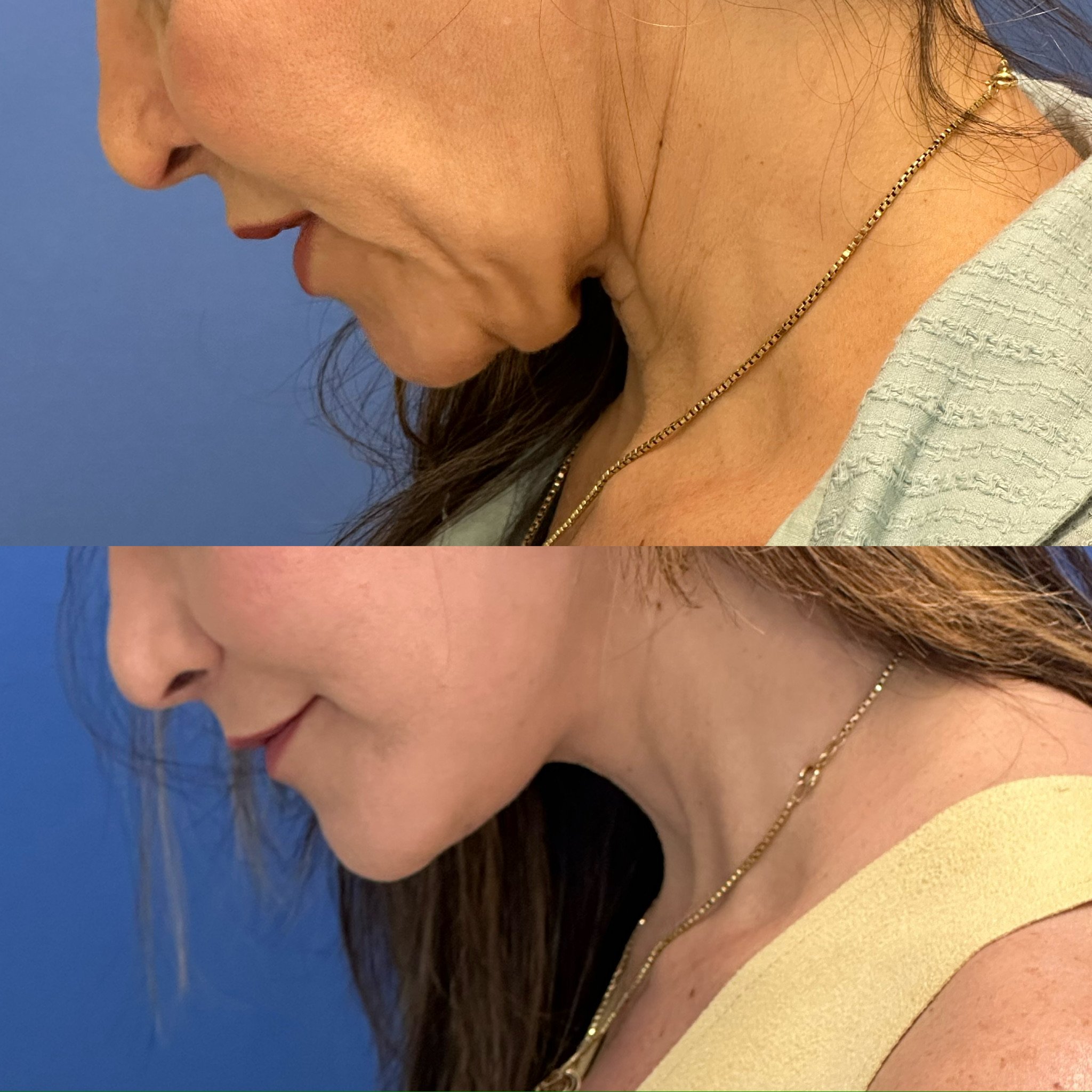
Mentoplasty
What is it?
Mentoplasty, also known as chin surgery, is a surgical procedure that aims to reposition the chin, whether it is retracted or advanced to the ideal location on the face.
Mentoplasty is indicated for several cases, including:
Facial imbalance: A chin that is too small (microgenia) or too large (macrogenia) can unbalance facial harmony.
Central recession: When the chin is positioned too far back, affecting facial proportion.
Facial asymmetry: Correction of differences in the size or position of the chin.
Post-traumatic reconstruction: Restoration of the shape of the chin after accidents or surgeries.
Combined procedures: It is often performed in conjunction with other facial surgeries, such as rhinoplasty or rhytidoplasty (facelift), to achieve overall aesthetic balance.
Types:
Augmentation mentoplasty
Implants: In surgery to correct a retracted chin, a silicone or porous polyethylene (POREX) prosthesis is inserted. An incision is made inside the mouth or through the chin. Anesthesia can be general, local with sedation or only local anesthesia. The hospital stay is 12 hours.
Fat grafting: Fat grafting for the chin is indicated for patients who wish to improve the projection and shape of the chin in a less invasive way and with more natural results.
Advancement osteotomy: Involves cutting and moving the chin bone forward. This method is indicated for more severe cases of chin recession.
Reduction mentoplasty
Removal of a portion of the chin bone to reduce its size. The incision is usually made inside the mouth to avoid visible scars.
How is it done?
Genioplasty is performed under local anesthesia with sedation or general anesthesia, depending on the complexity of the case.
Surgical Access: The incision is made inside the mouth or under the chin.
Bone Shaping or Implant Placement: The surgeon repositions the bone or places the implant as needed.
Incision Closure: Use of absorbable or removable sutures, followed by the application of a pressure dressing to minimize swelling.
How long does the surgery take?
Mentoplasty surgery can last for a variety of reasons. This depends on the complexity of the procedure, the technique used (augmentation or reduction) and whether it is performed in conjunction with other cosmetic surgeries. In general, mentoplasty surgery lasts between 1 and 2 hours.
Recovery and Post-Operative Care
Recovery varies from patient to patient, but generally includes:
First 48 Hours: Swelling and discomfort are common, but can be controlled with prescribed medication.
First Week: Wearing a compression bandage and maintaining a semi-liquid diet are recommended.
After surgery, most patients can return to normal activities within a week. It is important to avoid strenuous physical activity for at least a month.
Final Results: Results are visible right away, but residual swelling may take a few months to completely disappear.
Risks
Like any surgical procedure, genioplasty has risks, including:
Infection: Reduced risk with proper post-operative care.
Hematoma: Collection of blood under the skin, usually resolved with drainage.
Nerve Injury: May cause temporary or permanent numbness.
Adverse Reactions to the Implant: Rarely, the body may reject the implant or it may dislodge.
Mentoplasty and Rhinoplasty
Mentoplasty and rhinoplasty (nose surgery) are cosmetic procedures that are often performed together to achieve greater facial harmony.
Both surgeries aim to improve the appearance of the face, but each one addresses specific areas: the chin and the nose. Combining these surgeries can balance facial proportions, providing a more attractive and symmetrical profile.
Benefits of Combining Mentoplasty and Rhinoplasty
Facial Harmony: Combining these procedures can balance the proportions of the face. A small chin can make the nose appear larger and vice versa. Adjusting both procedures simultaneously helps to achieve a more harmonious aesthetic.
Natural Results: Performing both surgeries together allows the plastic surgeon to adjust the procedures to achieve more natural and harmonious results.
Joint Recovery: Combining the surgeries reduces the overall recovery time, as the patient recovers from both procedures simultaneously.
Combining mentoplasty and rhinoplasty can provide significant aesthetic balance, improving facial harmony and self-esteem in patients. Consulting with an experienced plastic surgeon is essential to assess individual needs and plan a personalized and safe treatment.
Before Mentoplasty
During the first consultation, the patient meets with the plastic surgeon. They discuss what the patient wants to change about their chin, whether it be to increase or decrease it. They also discuss aesthetic expectations.
Exams and Planning: Physical exams and, in some cases, 3D imaging are performed to accurately plan the surgery. It is essential that the patient is in good general health.
Preparation: The patient is given instructions on how to prepare for surgery, including avoiding certain medications and fasting before the procedure.
After Mentoplasty
Immediate Results: Immediately after surgery, the patient may notice an improvement in the shape and contour of the chin. However, there will be swelling and possibly bruising that may obscure the final results.
Recovery: Swelling and bruising gradually subside over several weeks. Most patients can return to normal activities within one to two weeks, following the surgeon’s recommendations.
Healing: Scars, depending on the technique used (intraoral or submental), are usually discreet and become less visible over time.
Final results can be seen after a few months. Swelling subsides and the new shape of the chin is revealed, improving facial balance.




